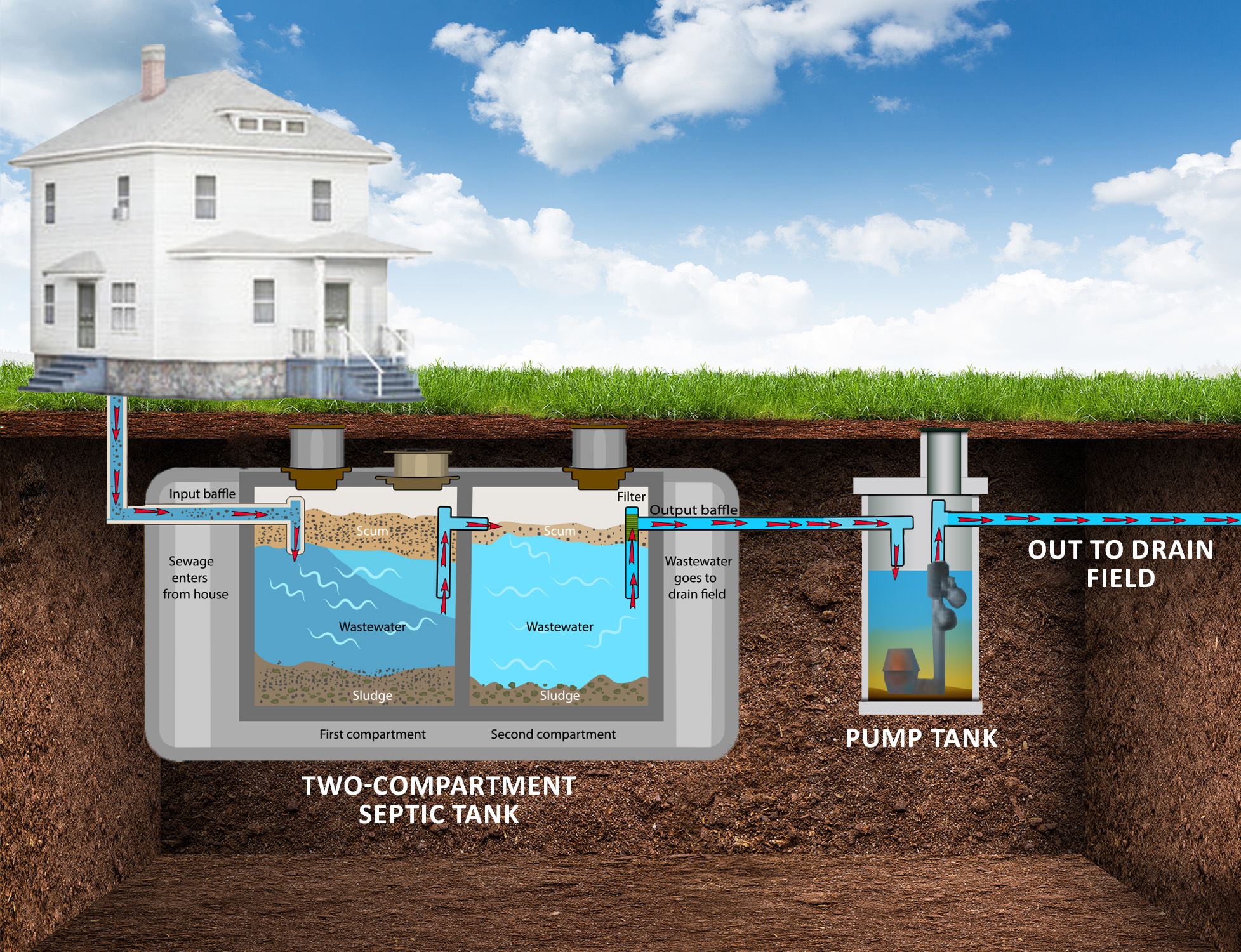
What is a Leach Field?
The septic system leach field (also known as the drain field) is the third component to your household septic system.
The leach field works by being both the disposal and the final treatment of the septic tank wastewater. The wastewater from the septic tank drains into the distribution box and then gravity helps to pull the water into the leach field and distribute it evenly in to the leach lines. This is the place where water purification happens biologically. The wastewater will flow into the soil and is used up by plants or flows into the groundwater to be a resource.
The bigger a leach field, the more wastewater it will be able to absorb and hold. If you have a larger septic tank, it is important to keep your leach field large enough to hold all the water being sent out.
Proper Leach Field Construction & Placement
It is very important that your leach field is built correctly so you don’t have any back-ups or clogs during the process.
The leach field in most homes is a constructed with many trenches of piping. The leach field trenches are about 100 feet long,18 inches wide, and go in a straight line with a flat bottom. They are often laid out in parallel lines with your distribution box at the very beginning.
A leach field should never be placed in an area with standing water or near drinking water sources such as wells, streams, lakes, roads, or other homes.
Common Leach Field Problems
One of the main problems with a leach field is clogs. This occurs when bio-mat builds up in the leach lines and hardens over time. A bio-mat is a naturally occurring layer of microorganisms and their byproducts that forms in the soil of the leach field. While it's a natural part of the process, an excessive bio-mat can cause drainage issues by restricting the flow of water. You can tell this is happening if you see standing water over your leach field or septic tank.
Other common issues with leach fields include:
Compaction: The soil in the leach field needs to be porous to allow for proper water absorption. If the soil becomes compacted due to heavy traffic or construction activities, it can reduce water absorption and lead to poor drainage.
Root Intrusion: Tree and plant roots are attracted to the moisture and nutrients present in the leach field. As they grow, these roots can infiltrate the pipes and cause blockages or damage.
Hydraulic Overload: If a septic system is overloaded with more wastewater than it can handle, it can lead to hydraulic overload of the leach field. This can saturate the soil and prevent proper water absorption.
Use of Harsh Chemicals: Disposing of chemicals, solvents, or excessive cleaning products down the drains can disrupt the natural bacterial balance in the septic tank and leach field. This can affect the breakdown of waste and lead to system issues.
Improper Design or Installation: If the leach field was not properly designed or installed, it can lead to drainage problems from the beginning. Factors like inadequate sizing, poor soil assessment, or incorrect pipe placement can all contribute to this issue.
Lack of Maintenance: Regular maintenance, including septic tank pumping, is essential for the proper functioning of the entire septic system. Neglecting maintenance can lead to various problems, including leach field issues.
Chemical Imbalance: The natural bacteria in the septic tank play a vital role in breaking down solids. Using antibacterial products excessively or pouring harsh chemicals down the drain can disrupt this bacterial balance and affect the decomposition process.
Age: Leach fields, like all systems, have a lifespan. Over time, they can degrade due to wear and tear, leading to reduced efficiency and potential failure.
To prevent these problems, it's important to have your septic system regularly inspected and maintained by professionals. Avoiding excessive water usage, proper waste disposal practices, and not planting trees or shrubs near the leach field can also help prevent some of these issues. If you notice any signs of trouble, such as slow drainage, foul odors, or wet spots in the yard, it's best to address them promptly to avoid more severe problems down the line.
If you notice any problems with your leach field, call in a professional from Wind River Environmental for an inspection right away.
Recommended Reading:

